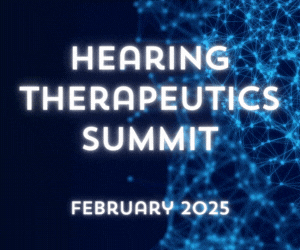I have just returned from a week in England attending the British Society of Audiology, where I spoke at the Pediatric Audiology Interest Group. This group consists of a variety of people who work with children with hearing loss – audiologists, teachers of the deaf, speech-language pathologists, auditory verbal therapists, and physicians. Some parents also attended. This meeting is similar to the AGBell conferences in the US where the audience consists of a variety of different professionals – all of whom have an interest in children with hearing loss.
Meetings that draw different professionals, all with different skills and experiences, are, to me, the most wonderful of meetings. We learn from our colleagues in a way we do not when we attend meetings limited to one professional group because we are exposed to information that is not directly in our field. Let me give you an example.
Audiologists are trained to evaluate hearing and to fit technology. Many audiologists do not go farther than that in working with patients. They follow prescribed formulas and assume that the technology is appropriately fit. Some will test to see performance with the technology, many do not. Some who do test, will do limited testing. A few do sufficient testing to know if the child is hearing soft speech and if the child can hear in competing noise. The audiologist will ask the child (or adult) how it sounds and, assuming there are no complaints, let the person go home. It’s important to remember that for a person with hearing loss, if things sound better than before they were aided, that may seem like enough and they may report that the fitting sounds good. But with some tweaking of the setting things get better. By testing, we discover exactly what the person is NOT hearing, and so we know what needs to be tweaked.
Speech pathologists and auditory verbal practitioners will work with children with hearing loss doing therapy and trying to improve auditory skills. The AVT may find that the child is not hearing certain phonemes or can only hear when the talker is close by. If the child does not have auditory access, there is nothing a SLP or AVT can do to remedy that.
But how does this information that there is a problem get communicated and how does the problem get repaired? Let us first assume that everyone has the best interest of the child in mind. But only audiologists who have contact with and listen to SLP’s and AVT’s can know that there is something wrong. If the SLP or AVT does not tell the audiologist that the child is having problems, and the audiologist does not test, nothing will get fixed. And then, the audiologist has to have the attitude that they can improve audibility. On the other hand, if the child does have auditory access (hears at 20 dB with technology throughout the frequency range), then the SLP and AVT have to take responsibility for providing the kind of therapy that will improve performance.
I have had too many families contact me to ask for help when the professionals they were working with did not communicate well with each other, for example, when the audiologist would not take responsibility when a child could not hear certain phonemes (‘He is not ready to do that yet’ is not an acceptable answer!) And I have seen too many SLP’s and AVT’s who did not pay careful attention to what exactly a child could hear and who did not report problems to their colleagues in audiology.
This is an activity that we need to work on as a group. For kids with hearing loss to be successful, it takes a village. But unless the people in the village talk with each other, and even more importantly, listen to each other, there is almost no chance that they will be able to do what needs to be done to help deaf kids succeed. Meetings like AGBell in the US, and the Pediatric Audiology Interest Group in England, are the kinds of meetings that facilitate communication. More people need to attend them. And let’s remember to include parents.





